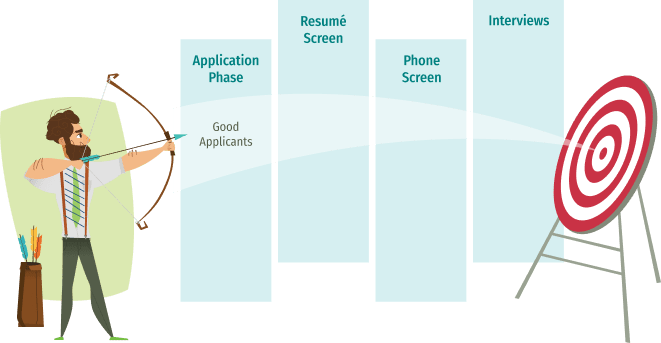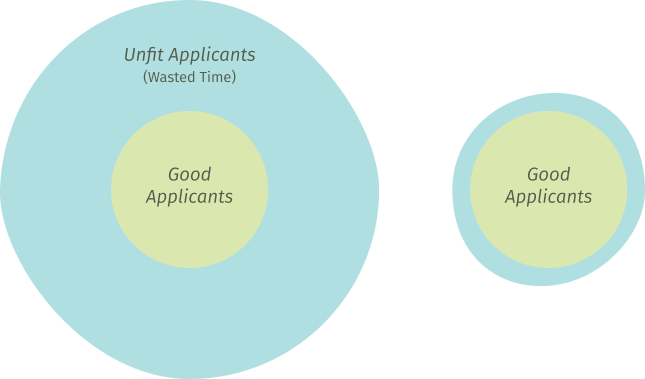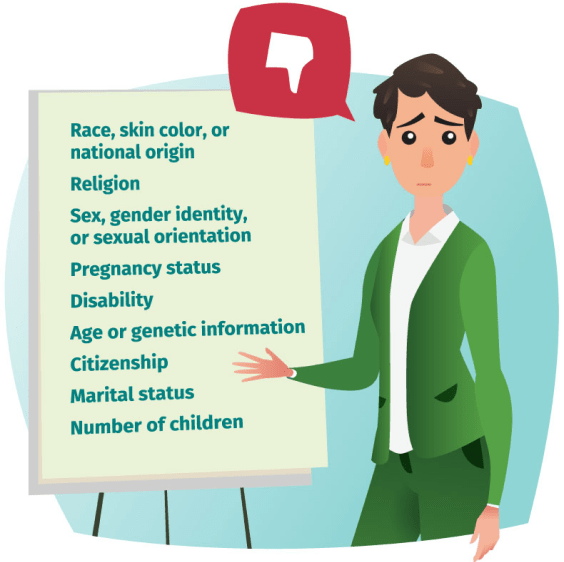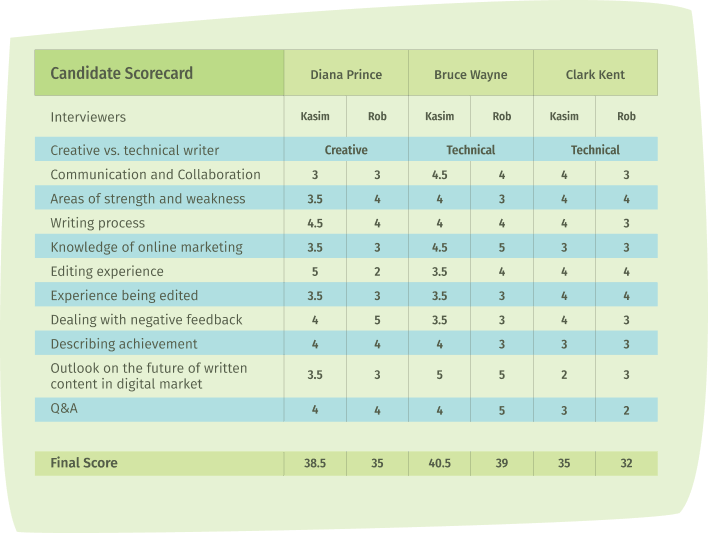Chapter 03
Talent Acquisition
Optimizing the Talent Acquisition System
Recruiting, hiring, and talent acquisition may sound like synonyms to the uninitiated. But understanding each step in the process of filling an open job position is essential for long-term retention and employee engagement. Whether a single person manages the talent acquisition process from top to bottom or your organization has a team of recruiters ready to support hiring managers, coordinating each step in talent acquisition can make the process efficient and effective.
This chapter will define talent acquisition, recruiting, and hiring, then walk you through each step involved in finding great candidates and hiring employees. Each step will answer common questions that come up during the talent acquisition process.
Defining Hiring, Recruiting, and Talent Acquisition
Let’s begin with definitions of these terms:
- Talent Acquisition is the full process of discovering candidates for open jobs and bringing them into your organization with the ultimate goal of retaining employees long-term (so you don’t have to repeat the process three months later). Talent acquisition consists of two phases: recruiting and hiring.
- Recruiting is the process of finding potential candidates for an open job position. There are many tools for recruiting employees, including job boards, employee referrals, and professional networking sites such as LinkedIn. After marketing an open position and collecting a pool of interested candidates, the recruiter screens out unsuitable applicants to deliver a pool of qualified candidates to the hiring manager.
- Hiring is the talent acquisition phase where the hiring manager and others assess each candidate in the candidate pool. Job interviews are the most common assessment tool, though some positions may require portfolio reviews or pre-employment certifications. After assessing candidates, the hiring manager will likely need to submit the final choice for approval from other leaders in the organization.
- The hiring manager is the person with the responsibility for selecting the final candidate. Generally, the hiring manager is the leader of the team with the open position. While teams may assist in hiring deliberations, the hiring manager is in charge of making the final selection when hiring employees.
Depending on the size of your organization, you could have a whole department of recruiters supporting several different hiring managers and a long list of approvers—or you might have one person recruiting, hiring, and approving.

The Talent Acquisition Funnel
Finding the right candidate for an opening isn’t a Field of Dreams process—just building a job requisition doesn’t mean candidates will come. Effective talent acquisition starts with a large group of potential applicants and narrows it down through several phases of the recruiting process.
Professional recruiters refer to this process as the talent acquisition funnel. Each phase sends on just enough candidates to provide a diverse set of choices while ensuring that hiring managers aren’t overwhelmed with unqualified candidates during the hiring phase.
A successful talent acquisition process will help recruiters and hiring managers answer two important questions about each candidate—while also helping candidates answer these questions for themselves:
- Can they do the job?
- Do they want to do the job?
If your goal is hiring employees who stay with your organization in the long term, it’s important to aim the talent acquisition funnel toward candidates who can answer both questions with a resounding yes. This requires a clear understanding of job requirements, expectations on prerequisites and available training, and alignment with your organization’s mission, vision, and values.
Recruiting: How Do I Create a Job Description?
Beginning the recruiting process can seem as simple as copying common job requirements from another job posting and just rolling with it. But unless this standard description aligns with current realities of your organization’s culture and operations, you’re giving yourself more work to do and more unqualified candidates to eliminate during the hiring process.

A targeted talent acquisition process, however, will give you a much larger ratio of good applicants to unfit applicants. This starts with well-defined job requirements set forth in a job ad that reaches a diverse yet well-aligned group of candidates. This approach is key for building a large group of qualified applicants while recruiting employees to provide hiring managers a diverse group of candidates to select from—even after several screening steps.
Finding the Bullseye—The Difference Between a Job Description and a Job Ad
To target your job description, you need to fully identify the ideal center of your hiring funnel––what a qualified candidate looks like––and extrapolate from there. This starts with defining the job description for each position you open.
While the general public views job description and job ad as synonyms, a job description is a complete analysis of the experience and expectations associated with a position. An effective job ad will clearly present the core parts of the job description so candidates know whether their skills and interests align.
- Hard skills are often task-based competencies that employees develop through education or vocational training. For example, someone with no legal training isn’t a good candidate for corporate counsel—learning on the job can’t replace several years of law school. A general contractor with years of experience building roofs or installing tile floors would also have several hard skills a more inexperienced employee has yet to develop. While there may be some space for developing hard skills in the workplace, hard skills are most often prerequisites for meeting position requirements.
- Soft skills, on the other hand, are personal attributes that have more to do with how employees communicate and relate to each other. These include leadership skills, collaboration styles, conflict resolution skills, and personal integrity. Checking resumes for years of experience and promotions can be an indication of soft skills when recruiting employees, but fully assessing candidates’ soft skills comes later on, during the hiring phase.
It’s essential to carefully select each hard and soft skill for positions in your organization to ensure that your job postings align with your organization’s mission, values, and industry.
When you’re writing a job description, identify which hard and soft skills are prerequisites and which ones a successful candidate can learn on the job. For example, listing a specific project management system such as Jira or Asana as a required hard skill may exclude candidates who have extensive experience in a similar system—candidates who could quickly adapt to your system of choice.
While there may be similarities between job requirements for positions in different organizations, it’s essential to carefully select each hard and soft skill for positions in your organization to ensure that your job postings align with your organization’s mission, values, and industry.
Case Study: The BambooHR Sales Team
In the early years of BambooHR, we used a fairly standard job description for our account executives. But as our product developed and we understood our customers better, we found that we needed to reexamine our assumptions for the sales team. This became especially clear when several members of sales commented that they loved our culture—and that they wished it applied to sales like it did for everyone else.
So we did a top-to-bottom examination of the position, including compensation, soft skills, and the other realities that kept sales from having the same employee experience as other departments.
We found that selling HR software differed in many important ways from selling other products. Instead of trying to directly persuade the HR contacts we worked with, we had more success in educating them of the benefits of HR software, helping them make their case to the people who made the final purchasing decisions. This required a different set of soft skills—while persuasion was still important, having a knowledge of the HR space was equally important, if not more so.
We took our new understanding of what it meant to sell BambooHR and revisited our job description. Instead of targeting highly persuasive sales professionals looking for high commissions, we targeted people with HR experience who wanted to help other HR professionals make a difference. We also shifted from commission-based sales to salaried sales positions to remove personal conflicts of interest with our value of doing the right thing for our clients, even if it means telling them BambooHR isn’t a good fit.
As a result of our ongoing optimization, we’ve done better at retaining employees and experienced more satisfaction with culture on the sales team.
The Importance of Candidate Demand
A fully-defined job description answers an essential question: who would want this job? The answer involves several defining factors, including compensation expectations, potential for advancement, and expected tenure. Put simply, not all jobs are forever jobs, so identifying the shelf life for each position as a part of the job description can help make realistic projections for your organization’s future talent needs.
For example, compare a software developer position with a recruiting coordinator position. Aside from differences in compensation, these positions likely offer different trajectories for career growth. Because a recruiting coordinator handles administrative work like contacting candidates and arranging interviews, the position comes with a ceiling on compensation, growth, and opportunity.
If your organization chooses to create positions with a short shelf life, then it’s essential to clarify your development and internal hiring policies. If a recruiting coordinator takes the job to put them through a software development course, will they be able to transfer to the development team? Or will they need to leave for an entry-level development position somewhere else?
Creating a Job Ad
After careful consideration, you should be able to develop these sections of a job ad:
- Job title and summary
- Information about the organization
- Job duties
- Job requirements
- Benefits of working at the organization in this position
- Any required legal language
Job Ad Practices to Avoid
Here are some pitfalls to watch out for when creating a job ad:
- Asking for too much. In job descriptions, more isn’t always better. The goal of writing a job description into a job ad isn’t to find a 100 percent match—lengthy lists of requirements can discourage good candidates from applying because they don’t check all the boxes or because they fear you have unrealistic performance expectations.
- Basing job descriptions on people instead of positions. It can be tempting to have a departing employee write their own job description or to describe a star employee in the position requirements. Unfortunately, this can lead to an overly prescriptive job ad, especially if it requires high proficiency in hard and soft skills.
- Using overly general terms. While it’s important to ask for abstract attributes like leadership and collaboration, it’s also important to demonstrate how those attributes operate in the position. One good way to define these terms is to list them as actions in a section that begins “A successful candidate will...”
- Using blanket language for different positions. There’s nothing quite as demoralizing as candidates realizing their career is at a dead end after the job ad promised excellent growth opportunities. An effective job ad will help candidates understand the position’s day-to-day experience and long-term objectives so they can get a realistic picture of where they’ll be in six months or a year.

Recruiting: Where Do I Post the Job Ad?
As with writing a job description, more is not always better when posting your job advertisements. For your job postings to gain traction, it’s important to understand the job market for the position you’re looking to fill so you can select the right avenues for qualified candidates to find it. Here are some guidelines for targeting your job postings:
- Begin with your careers page. A careers page can be a good resource for candidates to search all open positions in your organization if the position that drew them in turns out not to be the best fit. You can also add information about your company’s mission, vision, and values to help candidates know whether their personal values align.
- Make the most of referrals. This doesn’t just include employee referrals but also external referrals. Unqualified or uninterested candidates near the edge of your hiring funnel may know someone who is a better fit. Encouraging them to pass information along can help attract additional qualified candidates.
- — Note: Many people fear lessening diversity through referrals, as employees tend to associate with people similar to themselves. In truth, referrals magnify your organization’s current diversity: a diverse organization tends to remain diverse while a homogenous organization is likely to become more homogenous. For more on culture, see our chapter on the employee experience.
- Leverage professional groups on LinkedIn. Professional networking sites are good resources for reaching groups of candidates with shared qualifications and experience.
- Target job ad keywords. Search engine optimization isn’t just for marketing anymore. Even if your organization calls your support employees Customer Ninja Wizard Heroes, if you’re advertising for a new one it’s important to use the term candidates search for. Pay attention to how different title and body keywords perform.
Targeting job postings can lead to better use of your recruiting resources—not just through saving hours when recruiting employees, but also in the costs associated with posting and promoting job ads. JD Conway, manager of talent acquisition at BambooHR, puts it this way: “When I hear about people paying $10,000 to LinkedIn so they can blast out 300 InMails to every profile that matches their search results, I want to ask, ‘What’s your dollars-to-responses ratio?’”

Recruiting: How Do I Screen All These Applicants?
If you’ve successfully targeted your job description and posted it in the right places, you’ll get a diverse, relevant, yet manageable pool of applicants. The next step in the recruiting process is to screen your applicant pool and learn enough about each applicant to identify those who are the best candidates to continue through to the hiring process.
Screening with a Human Touch
Many organizations rely on A.I. to screen resumes that don’t match a given template. While this technology is improving, fully automating the screening process still runs the risk of disqualifying candidates for selecting the wrong option or failing to include enough keywords.
Whether your recruiting process involves A.I. or manually processing each application, taking the time for a telephone screening gives recruiters the chance to ask follow-up questions. These questions can resolve ambiguities and identify mismatched candidates before inviting them to interview.
Recruiters may choose to reaching out to candidates about issues such as:
- Details about listed work experience
- Gaps in employment
- Questions about relocation and work-from-home policies for geographically distant applicants
You can also use screening questions to connect mismatched candidates with other available positions at your organization that may be a better fit.
Reaching out to candidates who have participated in your screening process demonstrates that your hiring process respects the effort candidates put into applying. “I write them all individually—no form letters,” Conway says. “That takes a ton of time, but all it takes for me to justify it is to think about how I’d want someone to approach me; it’s the Golden Rule.”
At this point in the talent acquisition process, recruiting has produced a pool of finalists. This pool should be small enough that hiring managers can make time in their normal duties for a final screening, using their expertise to check the details of each finalist’s application. After screening out any unsuitable candidates that made it through the initial screening before proceeding to the first stage of the hiring process: the job interview.
See how mobile apps help you stay responsive to your candidates.
Hiring: What Questions Should I Ask During a Job Interview?
When hiring managers approach a job interview, their first concern is often finding the best questions to ask. While they know their field of expertise and the hard skills a successful candidate will need, they may wonder how to suss out the soft skills that determine whether a technically-qualified candidate is a good long-term fit for the team. Making inaccurate assumptions is human nature, and a few hour-long meetings doesn’t give much to work with.
This instinct to pause before diving into a job interview is a good one. A New York Times article captured the limitations of interviews with the account of a woman who showed up five minutes early, gave what she felt was a fairly standard interview performance, and received a job offer on the spot.
As she was leaving, one of the interviewers remarked that she was impressed by how composed the woman was after showing up 25 minutes late to the interview—she had been given the wrong start time. The new hire realized it would have been a completely different interview if they had asked her why she was so late instead of assuming she had massive confidence.
Mitigating Unavoidable Biases While Making Connections
Job interviews are a trade-off: while candidates and hiring managers need time face-to-face to make a human connection, even the most lengthy interview doesn’t provide enough time to clarify every assumption. Both sides walk away with impressions shaped by their individual biases.
Biased hiring can lead to a lack of diversity at best—and legal challenges over discrimination at worst.
To be clear, biases are unavoidable. They’re the mental shortcuts that help us focus on the most important information of the moment without re-examining everything we believe. They determine whether we find a situation threatening or inviting, accessing all the observations and lessons we’ve learned since birth to form conclusions in a fraction of a second.
Biased hiring can lead to a lack of diversity at best—and legal challenges over discrimination at worst.
Job Interview Questions to Avoid
While it’s important to mitigate even minor biases during interviews, there are several categories of interview questions that are prohibited by law as discriminatory.
These include asking candidates about the following:

At the same time, it’s important to ask insightful questions that get past assumptions and help candidates and hiring managers to make informed decisions. Unfortunately, several popular job interview questions—like “What is your greatest weakness?” and “Where do you see yourself in five years?”—don’t advance this conversation.
The Best Job Interview Questions to Ask
The best job interview questions don’t rely on cliches or gut instinct.
Here are a few suggestions:
- Describe a single project or accomplishment that you consider to be the most significant in your career to date.
- Tell me about a time you failed. How did you handle it?
- What did you like and dislike about your previous job?
- Do you have any questions for me?
In the end, there are no perfect questions for a job interview. Even with insightful questions, you might not get the information you need on the first try. Asking relevant follow-up questions during the interview shows the candidate that the interviewer is listening while giving the interviewer a chance to clarify what they’re asking for.
Hiring: How Should I Decide Who to Hire?
Hiring is a momentous decision for everyone involved. The successful candidate approaches a new chapter in their life, and the hiring manager prepares for growth and change on their team. As with the interview process, deciding who to hire is too important to leave up to one person’s perception (biases very much still apply).
To help mitigate the remaining effect of biases, we recommend interviewing in small groups of three or less with a predetermined set of questions. These questions should map to the job description for the position. After the interview, each member of the hiring team present can record their impressions on a candidate scorecard.

Along with providing a way to remember candidates’ interview performance, scorecards highlight discrepancies between interviewers, helping them identify differences in perception that need to be resolved. Completing a scorecard also helps solidify the reasoning behind your decision when presenting your final candidate for approval.
As your hiring teams consider metrics for discussing candidates, encourage them to use interviews to evaluate the soft skills that align with your organization’s values.
Hiring: What Should Be Included in the Offer Letter?
Consider the offer letter as the first step in the onboarding process, which we’ll cover in detail in the next chapter.
Your offer letter should include the following information:
- The name of the position
- The starting salary/hourly pay and pay schedule
- The start date
- A deadline for accepting the job offer
- “At will” employment language or other elements to comply with legal requirements
- Information about any background checks
- A walkthrough of their first day, including a schedule of activities and a list of identity documentation they need to bring
- Contact information for further questions
- Links to pre-boarding documents requiring their signature
Talent Acquisition is the Beginning of a Great Employee Experience
Some final points to consider:
- Be considerate of candidates’ time. Throughout the talent acquisition process, ensure your communications with candidates are clear, timely, regular, and cordial.
- Send rejection letters. Ghosting is unpleasant, both in dating and after job interviews. Even unsuccessful candidates deserve the respect of a simple, encouraging rejection letter.
- Burnish your employer brand. In our age of employer review sites, both successful and unsuccessful candidates can share their experience with your talent acquisition process. These reviews can influence your organization’s reputation and affect future candidate interest, so it’s essential to give every applicant a positive experience.
- Consider an Applicant Tracking System (ATS). As your organization grows, using an ATS helps your recruiting and hiring teams keep up the pace, whether they’re communicating with candidates or collaborating with each other.
A well-aligned talent acquisition process will help you uncover the best candidates to fill your job openings—and an open, considerate talent acquisition process will help them want to accept your offer.
You’ve read the guide. Now try the #1 HRIS for SMB, for free.
Start your Free Trial of BambooHR today!